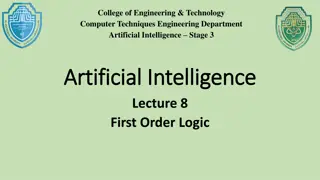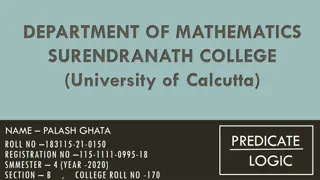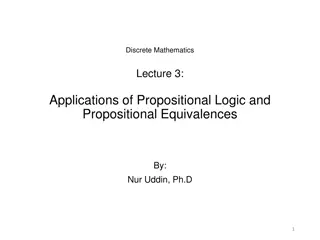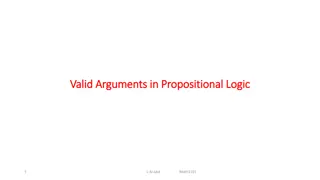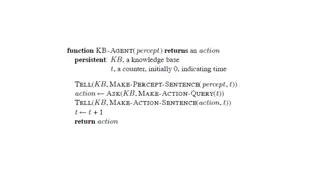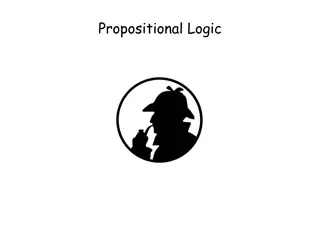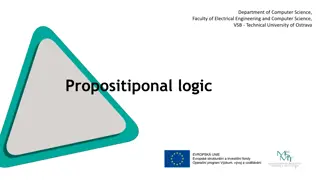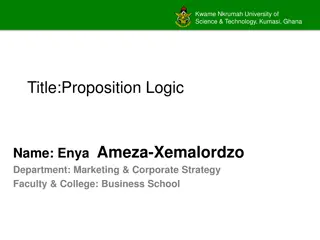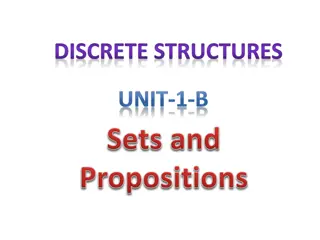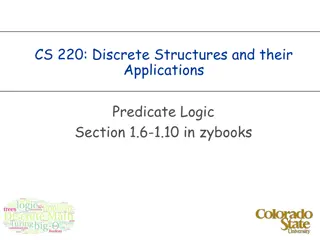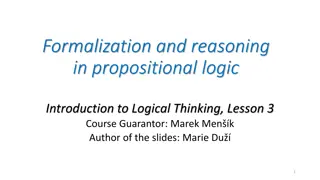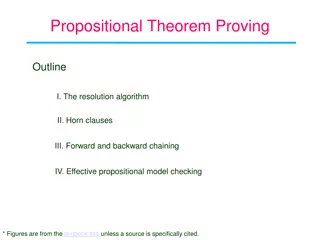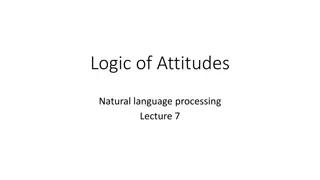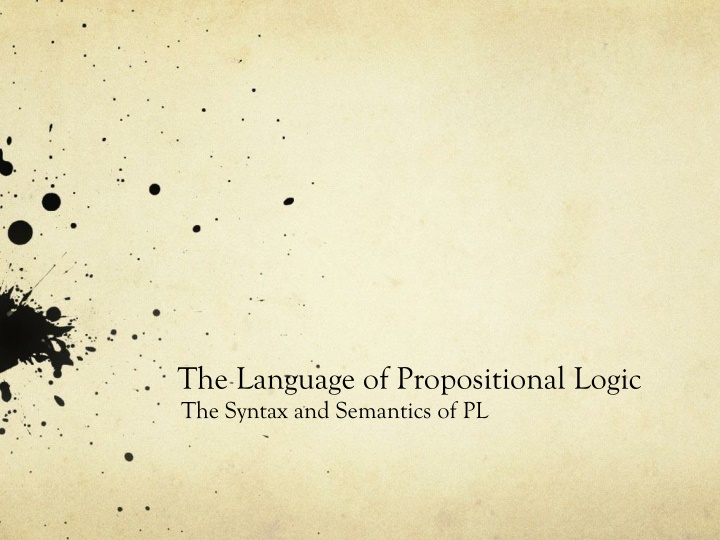
Propositional Logic: Syntax and Semantics Explained
Explore the fundamental concepts of propositional logic, including syntax, semantics, and well-formed formulas. Learn about the object language versus meta-language distinction and the rules for constructing valid expressions in propositional logic.
Download Presentation

Please find below an Image/Link to download the presentation.
The content on the website is provided AS IS for your information and personal use only. It may not be sold, licensed, or shared on other websites without obtaining consent from the author. If you encounter any issues during the download, it is possible that the publisher has removed the file from their server.
You are allowed to download the files provided on this website for personal or commercial use, subject to the condition that they are used lawfully. All files are the property of their respective owners.
The content on the website is provided AS IS for your information and personal use only. It may not be sold, licensed, or shared on other websites without obtaining consent from the author.
E N D
Presentation Transcript
The Language of Propositional Logic The Syntax and Semantics of PL
Languages in General All languages have a set of symbols, rules for constructing compound constructions out of atomic constructions, and meanings assigned to the significant units. For example, the letter A is part of English, but not part of Hindi. For example, English is a Subject-Verb-Object language, while Arabic is Subject-Object-Verb. For example, snow means snow in English, but schnee means snow in German. The syntax of a language is the grammar of the language. The semantics of a language is the meaning of the significant parts.
The Language of Propositional Logic Propositional Logic, PL, is a formal language, which has a set of symbols, a syntax, and a semantics. It is not a natural language, like English. It is possible to translate sentences of most natural languages, such as Greek, English, German, French, etc into PL. PL is a language that focuses on a small set of expressions. These expressions are the words used to connect propositions (sentences) to one another: and , or , if ,then , not , if and only if , and combinations of them.
The Syntax of PL Symbols: Propositional Letters: P, Q, R, S, T, U, V, W, X, Y, and Z Logical Operators: arrow broken arrow triple bar carrot wedge Grouping Symbols: (, ) parentheses, and [,] brackets
Object Language vs. Meta-language The language of PL described previously is the object-language. The object language is the actual language that is used for communicating in the language. For example, just as the word simple is part of the object language of English, the formula (P Q) is part of the object language of PL. The object language of PL must be distinguished from the meta- language for PL. The meta-language for PL is the language used for talking about PL. It is not part of PL, and is primarily used to describe the grammar and meaning of formulas at a level of generality. The meta-language variables are the lower case English letters: p, q, r, z.
Rules for Well-Formed Formulas All propositional letters P .Z are atomic well-formed formulas. 1. If p and q are well formed, then so are the following: p (p q) III. (p q) IV. (p q) (p q) 2. I. II. V. Nothing is a well-formed formula, unless it follows from (1) and (2). 3.
Examples Not well-formed Well-formed P (P (Q R)) 1. 1. (V ( R S)) QP 2. 2. R (Q (R S)) 3. 3. A (S (R T)) 4. 4. R) (P (R S)) 5. 5.
The Semantics of PL PL is a language that only focuses on propositional connectives and operators. In English the main propositional connectives are and , or , not , if , then.. , and if and only if . Since PL is only focused on these terms it only has a semantics for these terms. The semantics for PL is binary and exclusive. There are only two truth-values: T and F, and no statement is both T and F. It is important to note that the semantics of PL is for the logical operators of its language: , , , , and .
Logical Meaning vs. Non-Logical Meaning Logicians try to give definitions of the propositional operators of PL that match perfectly with the logical meaning of and , or , not , if then , and if and only if . However, there are many cases in which the English use of, for example and or if ,then , do not match the definition given to carrot and arrow. In philosophy of logic one studies what the correct definition of the logical operators should be, and other questions about whether logic is binary and exclusive.
Truth-Tables In order to define the logical symbols of PL, one needs to use a truth-table. A truth-table is a table for visually displaying the distribution of truth and falsity across a compound formula given the basic inputs from the atomic letters. p T q T T F F T F F
Broken Arrow, Negation The definition of broken arrow is intended to capture the logical meaning of the word not , and the function of negation. The core idea is that the output is the opposite of the input. p F T p T F
Carrot, Conjunction The definition of carrot is intended to capture the logical meaning of the word and , and the function of conjunction. The core idea is that the output is true only if both inputs are true. (p q) T F F F p T T F F q T F T F
Wedge, Disjunction The definition of wedge is intended to capture the logical meaning of the word or , and the function of disjunction. The core idea is that the output is true as long at least one input is true. (p q) T T T F p T T F F q T F T F
Arrow, Material Conditional The definition of the arrow is intended to capture the logical meaning of the phrase if ., then , and the function of material conditional. The core idea is that the output is false only when the first input is true, and the second input is false. (p q) T F T T p T T F F q T F T F
Triple Bar, Biconditional The definition of triple bar is intended to capture the logical meaning of the phrase if and only if , and the function of biconditional. The core idea is that the output is true just in case the inputs are the same. (p q) T F F T p T T F F q T F T F

